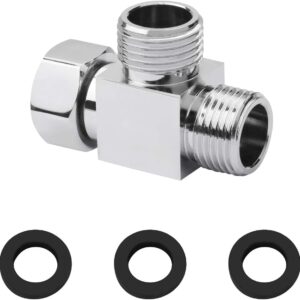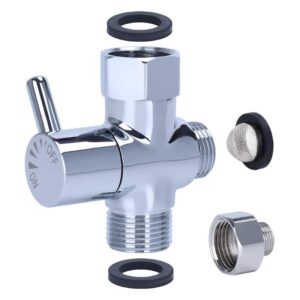Description
90° degree Turn Ceramic Valve
JX-0224
- Shutoff angle stop valve
- Size: 1/2″ X 1/2″
- Name: Cistern tap
- Body Material: Brass
Quarter-turn angle valves are an alternative name for 1/4-turn ceramic disc valves. Conventional taps and valves are known as multi-turn valves, which rotate 360 degrees to open or close. However, 1/4-turn or quarter-turn valves are an advanced variety.
Rotating at a 90° angle means 1/4 turn angle valves can be opened or closed entirely. Consequently, they traverse considerably less rotatory motion than conventional ones. Ceramic disc valves with a 1/4 turn are more effective, fast, and efficient. They serve the purpose of either controlling or obstructing the flow of liquid. This valve variety consists of two apertures. The other is designed to be installed in a shower or fixture, while the former is connected to the main supply.
Liquids pass through a 90° angle between the inlet and outlet and penetrate the valve through an aperture. The disc, sometimes present in the valve, functions as a fluid regulator and, at times, as a seal, such as in butterfly valves.
Why You Ceramic Discs?

Ceramic discs are renowned for their remarkable longevity and corrosion resistance, both critical attributes for any water system valve. Their capacity to create a secure seal prevents leakage, conserving water and diminishing the likelihood of damage.
In the long run, Ceramic Disc Technology is a cost-effective option because it not only withstands extreme temperatures and severe water conditions but also assures a seamless operation.
What Is the Significance of the Angle Design?
The angle valve’s design enables a 90-degree change in the direction of water flow. This is essential in locations where a directional change in the piping lines is required. Additionally, the design facilitates straightforward access to the valve for maintenance or operation, an essential attribute in confined or inaccessible areas.
Moreover, angle valves are ideal for securing fixtures in isolation, allowing for replacement or repair without disrupting the water supply to other areas.
Often, an angle valve is installed at the point where a water conduit exits a wall to supply a fixture. A quarter-rotation of the valve handle activates water flow by aligning the ceramic discs; an additional quarter-rotation in the opposite direction blocks the flow path and deactivates the water supply. This valve type is highly regarded for its dependable sealing, swift and effortless operation, and extended lifespan.
Types Of 1/4 Turn Ceramic Disc Angle Valve
We shall now examine the various varieties of product material. Let’s explore multiple varieties of ceramic disc angle valves with a 1/4-turn.

1/4 Turn Copper Ceramic Disc Angle Valve:
Copper is this quarter-turn valve’s parent material and finish, making it ideal for restrooms. It is resilient, versatile, and highly resistant to heat.
Changes in relative pressure can affect copper. The material in question is the user’s preferred choice for commercial use. Copper quarter-turn valves are gaining in popularity daily. They contribute to an aesthetically pleasing ambiance when installed in restrooms. An old compression valve may be suitably replaced with a 1/4-turn copper ceramic disk angle valve.
The item under consideration is a faucet valve. We incorporate touches that rotate it by 90° rather than 360°. It is highly effective and, if damaged, is simple to replace.
1/4 Turn Ceramic Brass Angle Valve:
This quarter-turn valve is made of brass, as its name implies. Bathrooms and kitchens are suitable locations for this compact fixture. The 1/4 turn valve, constructed entirely of brass, is ideal for water management. It remains durable for years without deteriorating. They resemble angle valves in the form of threads.
Turn Brass 1/4 Ceramic disc angle valves are capable of withstanding tremendous pressure. Their efficacy remains unaffected even when exposed to elevated temperatures. This angle valve can be installed in kitchens and restrooms to regulate liquid passage. They may be operated with ease. We can rapidly turn it on or off in an emergency due to the design of the quarter-turn valve.






